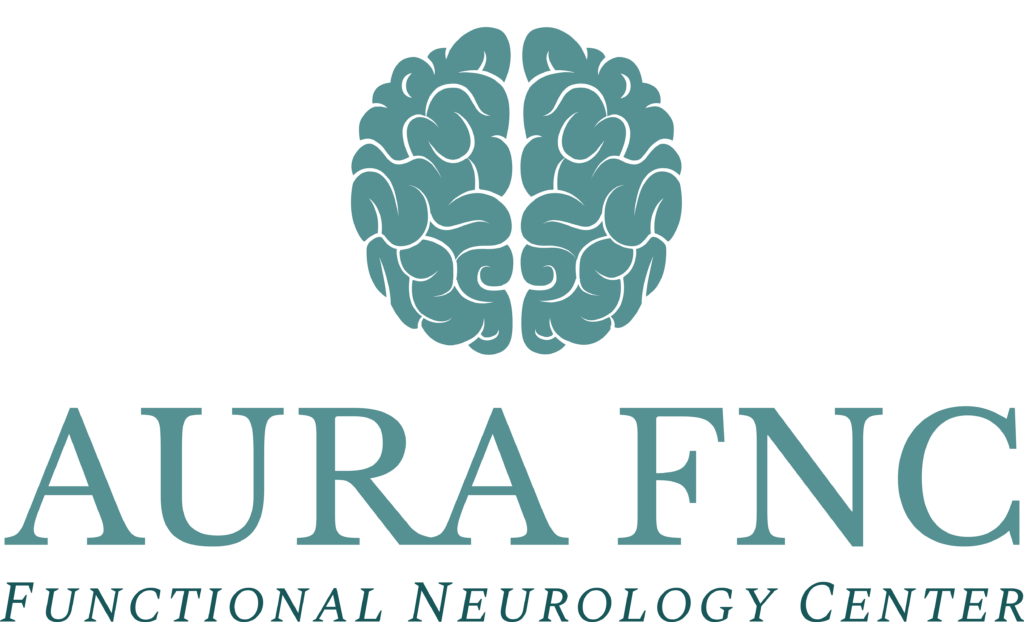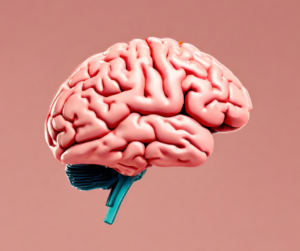Explore common migraine symptoms and understand their causes with Dr. Diana Tyler. Discover how functional neurology and neuroplasticity help manage and treat migraines effectively.

Dr. Diana Tyler DC, DACNB
Founder of Aura Functional Neurology Center. Board Certified Chiropractic Neurologist and migraine specialist. Graduate of Palmer College of Chiropractic and Diplomate of the American Chiropractic Neurology Board.
Table of Contents:
- Decoding the Throbbing & Pulsating Face Pain in Migraines
- Why Do Migraines Last from 4 to 72 Hours? An In-Depth Look
- The Role of Nausea and Vomiting in Migraine Attacks
- Photophobia: The Unseen Light Sensitivity in Migraines
- Sound Sensitivity (Phonophobia) in Migraines: What We Know
- Tinnitus and Hyperacusis: Auditory Disturbances in Migraine
- How Physical Exertion Intensifies Migraine Symptoms
- Sensory Aura in Migraines: Mysterious Tingling Sensations
- Unraveling the Complexities of Visual Aura in Migraine
- Hemiplegic Migraines: Slurred Speech and Temporary Paralysis
- Embrace Functional Neurology: Effective Migraine Management
Decoding the Throbbing & Pulsating Face Pain in Migraines
Description of head pain can be a helpful differentiator for an accurate diagnosis of your headache. The location of the pain, intensity level, and distinctions between sharp, stabbing, dull, throbbing, and pulsating– all separate common tension headaches, sinus headaches, and cervicogenic headaches from migraine.
Migraine pain is often described as pulsating because it stems from alterations in blood flow and pressure within the brain because of neuro-vascular changes occurring in the brain in the middle of a migraine attack.
During a migraine attack, blood vessels become dilated, causing an increase in blood flow and pressure. This increased pressure can cause a pulsating or throbbing sensation, which is often felt on one side of the head but can travel from one side to the other during a migraine attack. (Which can also be induced by not eating.)
The pulsating nature of migraine pain can also be attributed to the ways that the brain processes pain signals. The brain has a network of nerves that send and receive pain signals, and during a migraine attack, these nerves can become overactive. This overactive sensory input is called central sensitization. Central sensitization is a maladaptation within the brain’s ability to process painful and nonpainful stimuli. This overactivity can cause the pain to feel more intense, and each natural pulse of the blood vessel is perceived as painful.
It’s important to note that not all migraine pain is pulsating, and individuals can experience different types of pain during a migraine attack. Some people experience a constant ache or pressure, while others feel sharp or stabbing pain.
Why Do Migraines Last from 4 to 72 Hours? An In-Depth Look
One of the defining characteristics of migraine headaches is their duration, which is typically longer than other types of headaches. These headaches typically last for several hours to several days and can significantly impact a person’s ability to carry out daily activities.
The duration of a migraine headache can vary widely for each person and even from one attack to the next (especially if a certain food is triggering your migraine). Some people experience migraines that last for just a few hours, while others have migraines that last for several days. The length of a migraine headache can be influenced by many factors, such as the severity of the symptoms, the effectiveness of treatment, and the individual’s overall health.
Prior to a migraine attack, patients report symptoms of a migraine prodrome, which refers to the early warning signs. These warning signs can include changes in mood or appetite, fatigue, or difficulty concentrating for hours and days leading up to a migraine attack. Being wary of these types of common migraine symptoms can help you to try and prepare.
The Role of Nausea and Vomiting in Migraine Attacks
When experiencing a migraine headache, one might also experience nausea and vomiting, which can be very distressing for those who experience them. These symptoms can be caused by a variety of factors, including changes in brain chemistry, as well as the body’s response to pain and discomfort.
For many patients, the trigeminal nerve is involved, which is responsible for transmitting pain signals from the head, and also plays a role in nausea and vomiting during a migraine. When the trigeminal nerve is activated during a migraine, it can send signals to the vomiting center in the brainstem leading to the sensation of nausea and the urge to vomit.
These areas include the rostral dorsal medulla and periaqueductal grey (PAG), which are parts of the deep structures within the brain known as the brainstem. The rostral dorsal medulla is responsible for controlling functions such as breathing, swallowing, and heart rate, while the PAG is involved in the body’s response to pain and emotions. When these specific regions of the brain are stimulated during migraines, they might contribute to the sensation of nausea.
Understanding which regions of the brain are involved in migraines and their associated symptoms is important in developing effective treatments for this condition.
Photophobia: The Unseen Light Sensitivity in Migraines
Photophobia, also known as sensitivity to light, is a common symptom of migraine headaches. Over 80% of individuals with migraines experience photophobia during their attacks.
When someone has both sensitivity to light and a headache, it’s because of how the brain processes pain and visual information. Different parts of the brain, like the retina, midbrain, thalamus, hypothalamus, and visual cortex, work together to create these symptoms. Chemicals in the brain, like calcitonin gene-related peptides, can also influence how these parts of the brain communicate.
Another factor that can contribute to photophobia and headaches is something called cortical spreading depression, which sends more pain signals to the thalamus.
Sound Sensitivity (Phonophobia) in Migraines: What We Know
Phonophobia, or sensitivity to sound, is another common symptom experienced by individuals with migraines. Migraines cause changes in the activation of areas in the brainstem, which can affect the way the brain processes sound. This leads to an increased sensitivity to sound and a worsening of these types of common migraine symptoms in noisy or loud environments.
Patients, especially those who suffer from chronic migraines (>15 per month), have shown heightened sensitivity in the auditory neurons in their brainstem and lower auditory hearing thresholds than the average population. This suggests that the brainstem auditory neurons become more sensitive and easily triggered in people with migraines.
Tinnitus and Hyperacusis: Auditory Disturbances in Migraine
Tinnitus, also known as ringing in the ears, is a condition characterized by experiencing a sound in the ears without any external noise source. Studies have shown that tinnitus is more common in people who suffer from migraines compared to those who do not. The exact reason for this association is not fully understood, but it is believed to be related to changes in the cortex that occur during a migraine, an altered hyper-excitable brain state.
During a migraine, there is increased activity in the auditory cortex. This is the part of the brain that processes sound. This increased activity can lead to a sensation of ringing or buzzing in the ears. Additionally, migraines can cause changes in blood flow to the brain, which also contribute to the development of tinnitus.
How Physical Exertion Intensifies Migraine Symptoms
From a neuroscience perspective, physical exertion can trigger migraines due to changes in blood flow and pressure in the brain. When engaging in physical activity, the body requires more oxygen and nutrients, leading to an increase in blood flow to the brain. When blood flows and pressure increase, it contributes to blood vessels in the brain dilating even more, exacerbating migraine symptoms.
Additionally, physical exertion can cause the release of certain chemicals in the brain, such as serotonin and endorphins. While these chemicals can provide a sense of euphoria and pain relief, they can also trigger migraines in susceptible individuals. Serotonin, for example, is known to constrict blood vessels in the brain, but when levels are suddenly depleted, as can happen during exercise or running errands, it can trigger migraines.
Stress and strain on the body during physical activity can also contribute to the onset of migraines. Stress is known to trigger migraines by activating the body’s “fight or flight” response, which can cause blood vessels to constrict and dilate rapidly, leading to migraines.
Sensory Aura in Migraines: Mysterious Tingling Sensations
Patients with classic migraines or migraines with aura can experience tingling sensations in the face, scalp, or hands due to changes in the brain’s activity during a migraine attack. These sensations, also known as paresthesia, are typically described as tingling, lack of sensation, or pins and needles.
From a neuroscience perspective, paresthesia during migraines is thought to be caused by changes in blood flow and activity in the brain regions that control sensation and movement. Specifically, research has shown that during a migraine attack, there is decreased blood flow and decreased activity in the sensory cortex, which is responsible for processing sensations from the body. This decreased activity can lead to abnormal sensations, such as tingling or numbness.
Overall, the development of paresthesia during a migraine attack is likely due to changes in blood flow and activity in the sensory cortices of the brain. Understanding these mechanisms can help patients and healthcare providers manage and treat migraine symptoms more effectively.
Unraveling the Complexities of Visual Aura in Migraine
Visual aura is a common symptom of classic migraine, and it typically involves a variety of visual changes or alterations, such as flashing lights, zigzag lines, or blind spots. These symptoms occur before or during the headache phase of the migraine, and they can last from several minutes to an hour. In rare cases, a visual aura can cause a temporary partial/full loss of vision in one or both eyes.
The primary regions of the brain involved in the visual aura are the occipital cortex and the parietal cortex. These regions are responsible for processing visual information, and during a migraine, they can become hyper-excited, leading to the visual disturbances associated with migraine with aura. Studies have also shown that cortical spreading depression, a wave of electrical activity that moves across the brain, also contributes to the development of visual aura during a migraine.
Hemiplegic Migraines: Slurred Speech and Temporary Paralysis
Some people with migraines experience slurred speech or temporary paralysis of body regions, which can be a frightening and disorienting experience. These common migraine symptoms are often part of a type of migraine called hemiplegic migraine which is a rare subtype of migraine that leads to temporary paralysis on one side of the body, along with other neurological symptoms such as slurred speech, confusion, and vision changes.
The symptoms of hemiplegic migraine are caused by genetic mutations that affect the function of certain ion channels in the brain. These ion channels play a role in regulating the movement of charged particles in and out of brain cells, and mutations in these channels can lead to abnormal electrical activity in the brain that triggers migraine symptoms.
Recent research has also shown that hemiplegic migraine is associated with changes in the function of the cerebellum, a part of the brain that is involved in controlling movement and coordination. Studies have found that people with hemiplegic migraine have differences in the structure and function of the cerebellum compared to people without the condition.
Embrace Functional Neurology: Effective Migraine Management
If you experience these common migraine symptoms, consider being evaluated by a Functional Neurologist. Unlike traditional Neurology, which is focused on the structure of the brain and medication-based migraine treatment to manage your symptoms, Functional Neurology is focused on the function and connectivity of different brain regions involved in migraine headaches and rehabilitation of these regions with the use of neuroplasticity for long term management. Be an advocate of these common migraine symptoms and solve the underlying root cause today.







